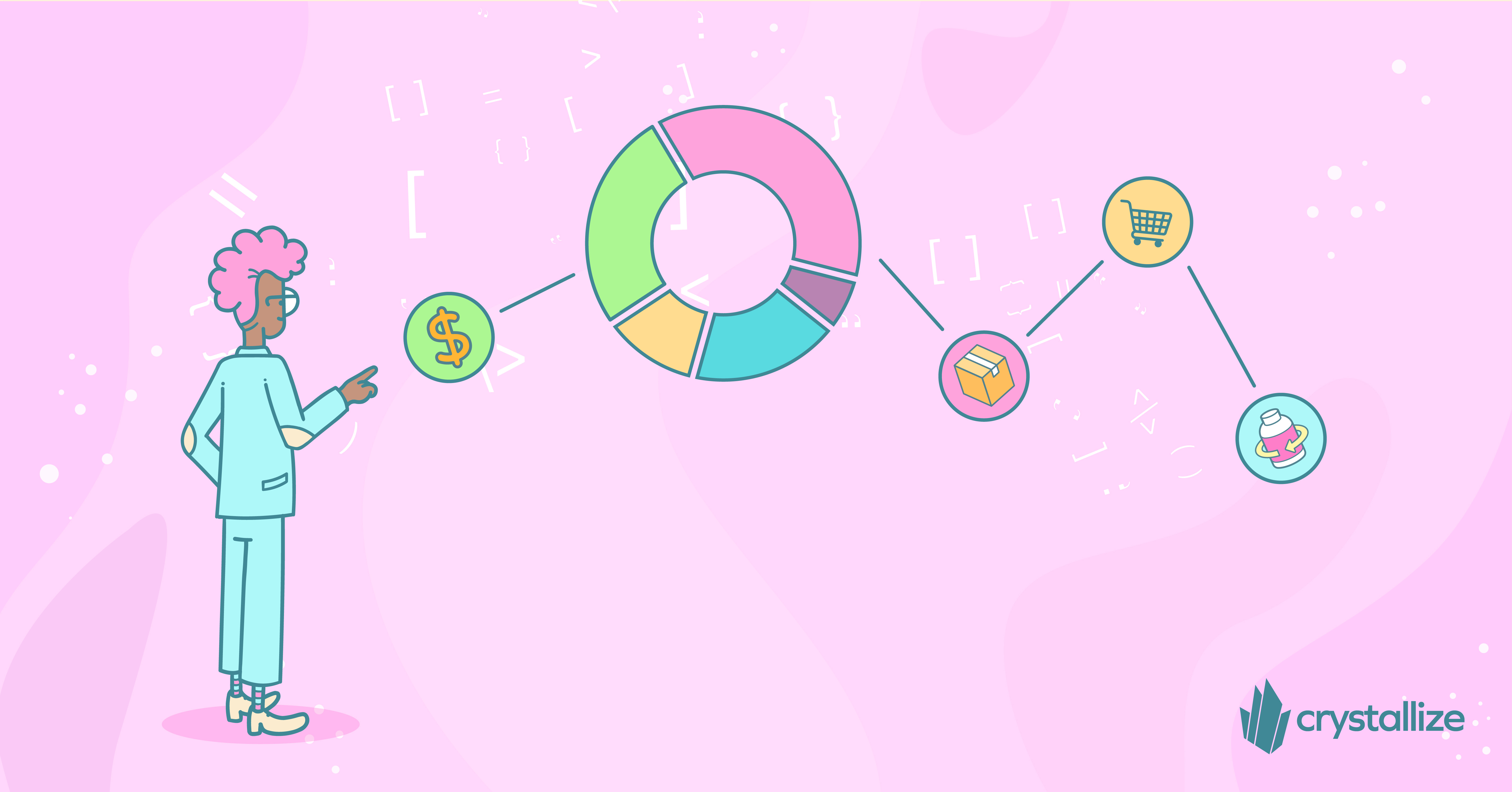Getting Started with Direct-to-Consumer (DTC) Marketing in 2023
Driving customer acquisition, optimizing the eCommerce experience, fostering loyalty, and scaling operations are the reason why brands opt out for Direct-to-Consumer (DTC) approach in business and marketing. But is it for everyone, and how do you start with it?

Have you noticed a growing number of online brands (for the lack of better wording, I used this rather generic term)? As if every influencer, big or small, now has a fashion or cosmetics brand. Further, it seems big brands are starting to look like those online brands.
What’s up with that?
The eCommerce market exceeded $5 trillion in 2021 and is projected to reach $8.1 trillion by 2026 (source link). Even if you do not belong to Millenials and Gen Z, the driving forces behind the wide adoption of online shopping, we are moving towards it more and more. As our shopping habits and expectations from brands evolve, so do their approach to, and their marketing efforts change.
Direct-to-Consumer (DTC) eCommerce business model and marketing approach have recently transformed the retail landscape. The simple reason for it, really. It allows brands to establish direct customer relationships and bypass traditional distribution channels.
In essence, with DTC, the brand controls the brand experience. In the age of personalization, it matters not only where you can be seen and who you tell your story to but also how you tell it. With DTC, you control the narrative around your brand, its history, and its purpose at your chosen distribution channels.
We’ve already covered what is Direct to Consumer (DTC) marketing. Here I wanted to shed some light on the benefits and key strategies some of our clients shared with us.
Benefits and Drawbacks of DTC
More control over branding, faster time to market, and better margins. With control over brand products and any associated marketing, branding, and distribution activities, you no longer have to think about next to who you'll be placed on the shelf and who you will be compared with. Instead, consumers look directly at your brand and how it can benefit them.
You are also able to experiment more and ship new products faster. Finally, without worrying about suppliers and retailers, the cut they get, you can reinvest in new products or new marketing channels to test.
On the other side, you have an upfront investment, more liability risk, and the daunting task of building your own marketing and supply channels. There is no start with the audience as you have with retail, just as there are no marketing and supply channels to rely on. So the initial brand awareness costs are high. The above comes with a risk that’s way smaller when you go down the beaten path of retail.
Key Strategies for Building a Successful DTC Business
OK. So we got the pros and cons of DTC, now let’s see the key strategies in marketing behind successful DTC businesses.
Establishing a Strong Brand Identity
Develop a consistent and memorable brand identity that differentiates you from competitors. This includes a unique value proposition, visual elements (logo, color palette, typography), and a distinct voice that resonates with your target audience.
Utilize Data-Driven Decision Making
Leverage customer data and analytics to make informed decisions about your product offerings, pricing, promotions, and marketing campaigns. Use tools like Google Analytics, customer relationship management (CRM) software, and social media analytics to track customer behavior and preferences.
Diversify Channels and Touchpoints
Offer customers multiple touchpoints and channels to interact with your brand, including social media, email, live chat, and mobile apps. This omnichannel approach will enhance customer experience and engagement.
Drive Customer Acquisition with Effective Marketing
Engage with your customers on all channels. That means you have to be effective in organic and paid acquisition channels. Rely on Search Engine Optimization (SEO), i.e., optimize your website for relevant keywords to improve organic search rankings and drive targeted traffic.
Create high-quality, valuable content that addresses your audience's needs, challenges, and interests. Leverage blog posts, videos, infographics, and podcasts to educate and engage customers while improving your website's SEO performance.
Invest in PPC advertising on platforms like Google Ads and Facebook Ads to reach potential customers actively searching for your products or services. Utilize targeting options to refine your audience and maximize return on ad spend (ROAS).
Finally, partner with influencers in your niche to leverage their reach and credibility. Collaborate on sponsored content, giveaways, and product reviews to increase brand exposure and drive new customer acquisition.
Optimize the eCommerce Tech Experience
Ensure your website is optimized for different devices (laptop, mobile, tablet, etc.) to provide a seamless shopping experience for users on the go. Deliver a performant website with responsive design at its core, fast load times, and easy navigation to reduce bounce rates and increase conversions.
Optimize product pages with high-quality images, detailed descriptions, and customer reviews to drive conversions. Provide detailed product information and ensure a seamless checkout process to minimize cart abandonment.
Offer personalized product recommendations and content based on user behavior and preferences. Use customer data to create targeted email campaigns and display dynamic content on your website to improve engagement and conversion rates.
Simplify the checkout process by minimizing the number of steps and offering guest checkout options. Implement multiple payment methods, including digital wallets and financing options, to cater to different customer preferences.
Adopt Advanced Technology
Embrace cutting-edge technology to enhance customer experience and improve operational efficiency. Consider adopting artificial intelligence (AI), machine learning, and virtual reality to personalize customer interactions, optimize marketing efforts, and streamline internal processes.
Build Customer Loyalty
Customer loyalty is the way to establish a strong brand. There are a couple of ways you can do that. Start by providing outstanding customer service through multiple channels, including email, phone, live chat, and social media. Resolve issues promptly and professionally to maintain customer satisfaction and foster long-term relationships.
While dealing with support issues, gather customer feedback through surveys, reviews, and social media to identify areas for improvement and ensure customer satisfaction. Use this feedback to refine your products, services, and overall customer experience.
What you learned to use in email marketing practice. This keeps customers informed about new products, promotions, and company updates. Implement marketing automation to send personalized, timely messages based on customer behavior and engagement.
Finally, develop a loyalty program that rewards customers for repeat purchases and engagement. Offer exclusive discounts, early access to new products, and personalized incentives to increase customer retention and lifetime value.
Streamline Operations and Supply Chain Management
Optimize your operations and supply chain management to improve efficiency and reduce costs. Implement inventory management systems, automate order processing, and leverage third-party logistics providers to streamline fulfillment.
Start Today
Whether or not DTC is for your business depends on whether or not you want to establish direct relationships with customers and bypass traditional distribution channels. Undoubtedly DTC is hard work. Still, if the mere fact you are holding the reins of your business is not enough, higher margins and potentially higher profit might be.
Explore More🔎

The Ultimate Guide to eCommerce Business Models (B2B, B2C, DTC & More)
Explore the different eCommerce business models—B2B, B2C, DTC, B2G, and more. Learn how to choose the right model for your online business and scale with modern strategies.

Comprehensive Guide to Modern eCommerce Web Development: Trends, Approaches, and Best Practices
Explore the latest trends, development approaches, and best practices to build high-performing online stores in modern e-commerce web development.

